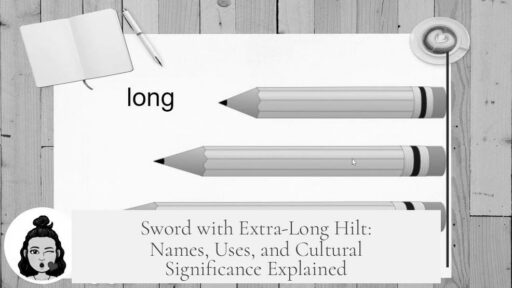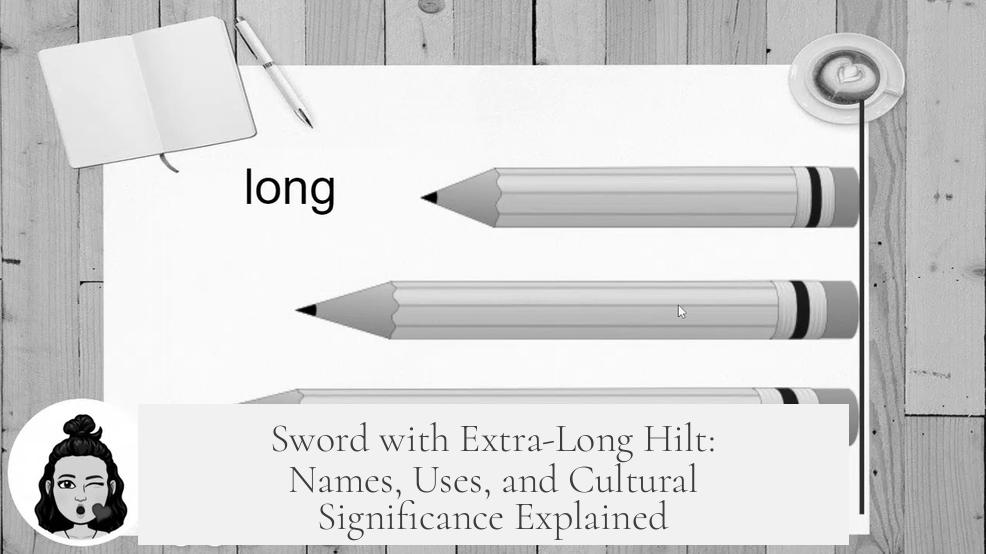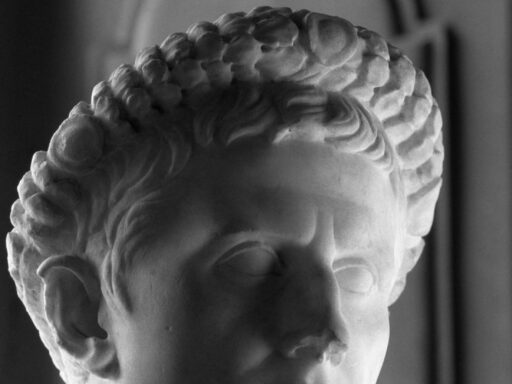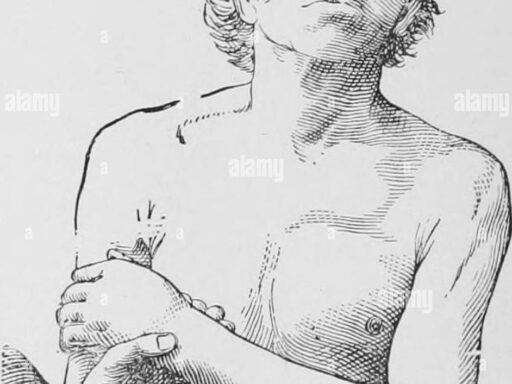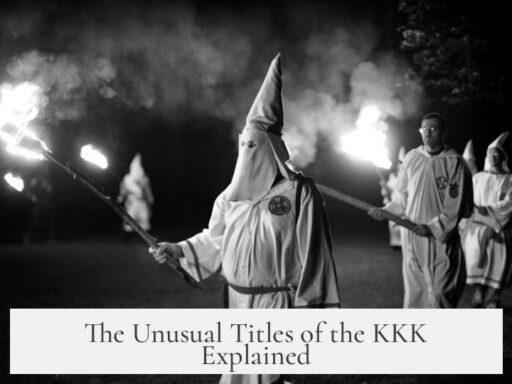The weapon type with an extra-long hilt, resembling a sword with a notably extended handle, is primarily called either zhanmajian (斬馬劍) or Erlang dao (二郎刀) in Chinese historical context. These names refer to large, two-handed swords with blade and handle proportions that set them apart from typical swords and polearms. Other related terms, depending on blade shape and edge, include zhanmadao, pudao, and dadao. In Japan, a roughly equivalent weapon is the nagamaki.
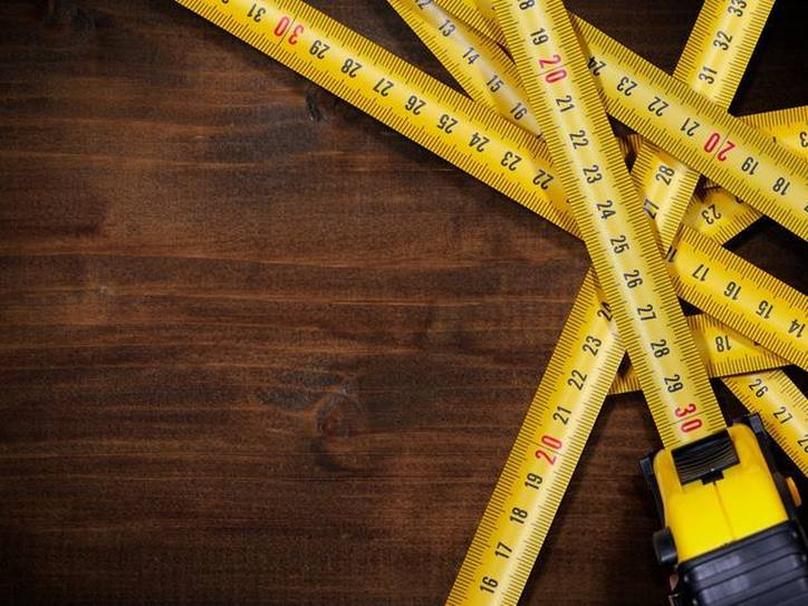
The zhanmajian, literally “chop horse sword,” reflects a style originating in Han Dynasty China. These weapons typically feature a double-edged blade and an extended hilt that allows two-handed use and extra leverage. Although the Qing military regulations do not formally list zhanmajian, this name is used by historians when referencing large swords with long handles similar to those used in earlier periods. The related zhanmadao—“chop horse knife”—is a single-edged variant commonly found in historical Chinese weaponry. It appears more often than the double-edged zhanmajian.
The terms pudao (“simple sword”) and dadao (“big sword”) are more common names for single-edged swords with long handles. These refer broadly to weapons with single edges and extended shafts, blending sword and polearm features. The classification dao in Chinese covers a wide range of single-edged blades, from small knives to weapons resembling short polearms. This broad categorization accounts for overlap among these terms.

The Erlang dao, named after the Chinese god Erlang Shen, is another double-edged variant featuring a long haft roughly equal to blade length. Illustrated in the encyclopedia Sancai Tuhui, it sometimes carries a triple-point blade design known as sanjian liangren dao (“three-point double-edged dao”). These types emphasize a two-handed grip for greater power and control.
Physically, swords with extra-long hilts provide longer reach than typical swords with similar blade lengths. The long handle allows gripping further back, yielding more leverage for cuts or thrusts. This feature is useful in close quarters where an opponent wields longer polearms; the wielder can increase striking momentum and control.

However, the extra-long hilt presents limitations. It restricts sweeping motion to some extent and offers an opponent more space to grab the weapon during close fighting. Its weight and balance differ significantly from staff weapons like the jo. Since it requires two hands, the user cannot wield a shield, reducing defense options. The length also prevents normal belt carry, limiting transportation convenience.
The sword-long-hilt combination shares advantages and flaws of both swords and polearms. It offers increased reach and leverage but lacks the full range and defensive flexibility of polearms or the speed and maneuverability of shorter swords. These trade-offs explain the relative rarity of this weapon type compared to distinct swords or polearms in historical warfare.
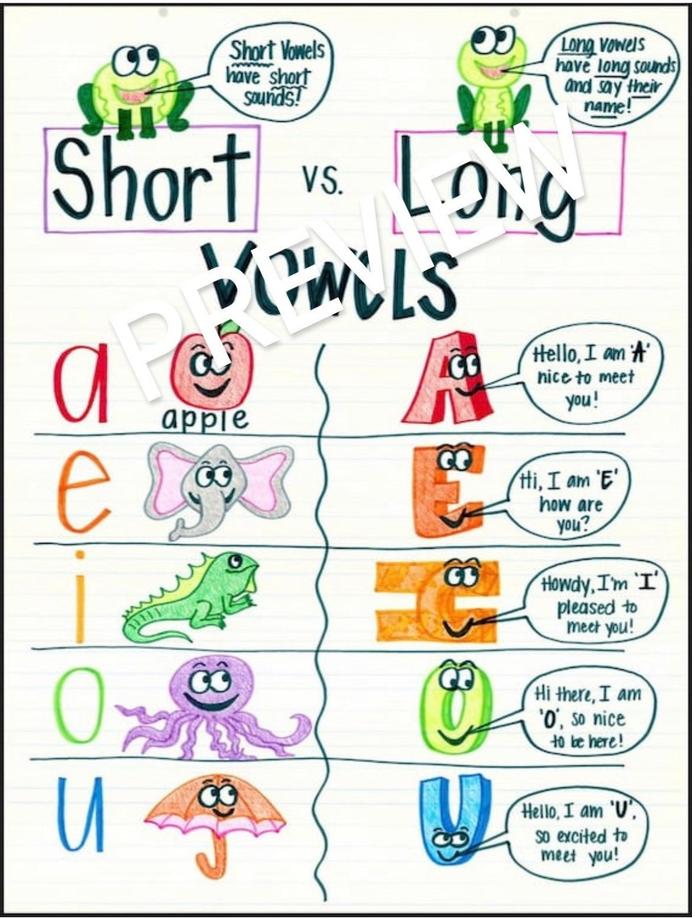
In Japanese weaponry, the nagamaki resembles these Chinese swords with long hilts. The nagamaki features a long handle wrapped for two-handed use, with a curved blade, combining polearm features with sword fighting techniques.
| Name | Chinese Characters | Translation | Notes |
|---|---|---|---|
| Zhanmajian | 斬馬劍 | Chop Horse Sword | Double-edged, Han dynasty origin, long handle |
| Zhanmadao | 斬馬刀 | Chop Horse Knife/Sword | Single-edged, more common variant |
| Pudao | 樸刀 | Simple Sword | Single-edged, general term for long-handled swords |
| Dadao | 大刀 | Big Sword | Large single-handed or two-handed types |
| Erlang Dao | 二郎刀 | Erlang Sword | Double-edged, long haft equal to blade length |
In summary, a sword with an extra-long hilt is best identified as zhanmajian or Erlang dao depending on edge style and variant. These weapons occupy a niche blending poles and swords, offering reach and leverage at the cost of agility and defense options. The concept finds parallels in Japanese arms such as the nagamaki.
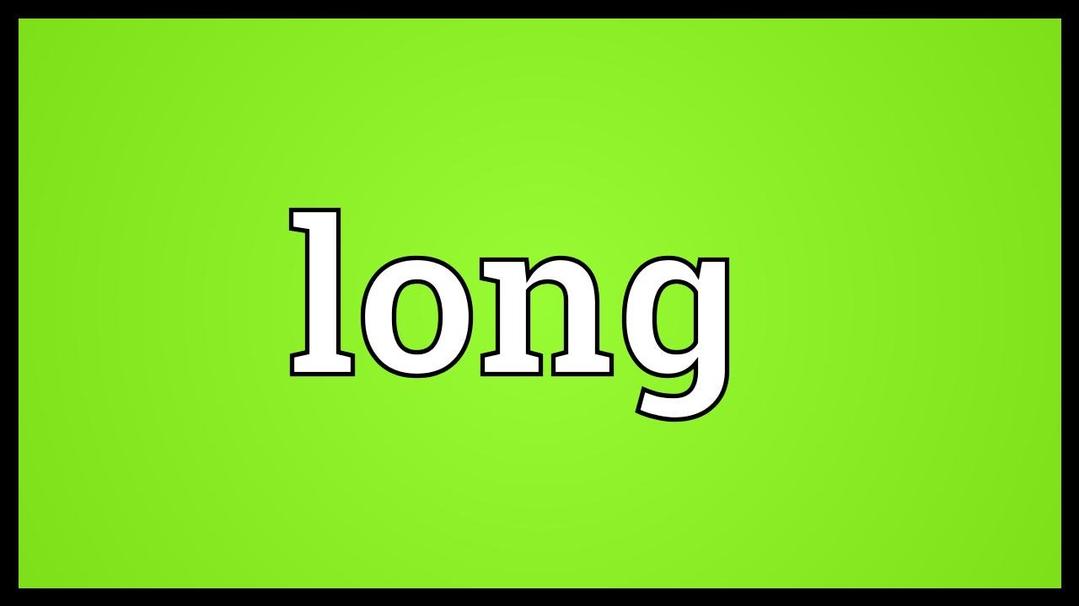
- “Zhanmajian” (斬馬劍) and “Erlang dao” (二郎刀) are the main names for swords with extra-long hilts.
- “Zhanmadao,” “pudao,” and “dadao” describe related single-edged, long-handled sword types.
- The long hilt adds reach and leverage but reduces maneuverability and defense options.
- Weapons combine features of swords and polearms, explaining their relative rarity.
- Japan’s “nagamaki” is a comparable weapon with a long handle and sword blade.
How Is This Weapon Type Called? (Sword with Extra-Long Hilt Explained)
You’ve caught sight of a sword looking a bit unusual—its handle is longer than expected, stretching way beyond what you’d call normal. You’re wondering, “How is this weapon type called?” In the Chinese context, the sword with an extra-long hilt is mainly referred to as zhanmajian (斬馬劍) or Erlang dao (二郎刀).
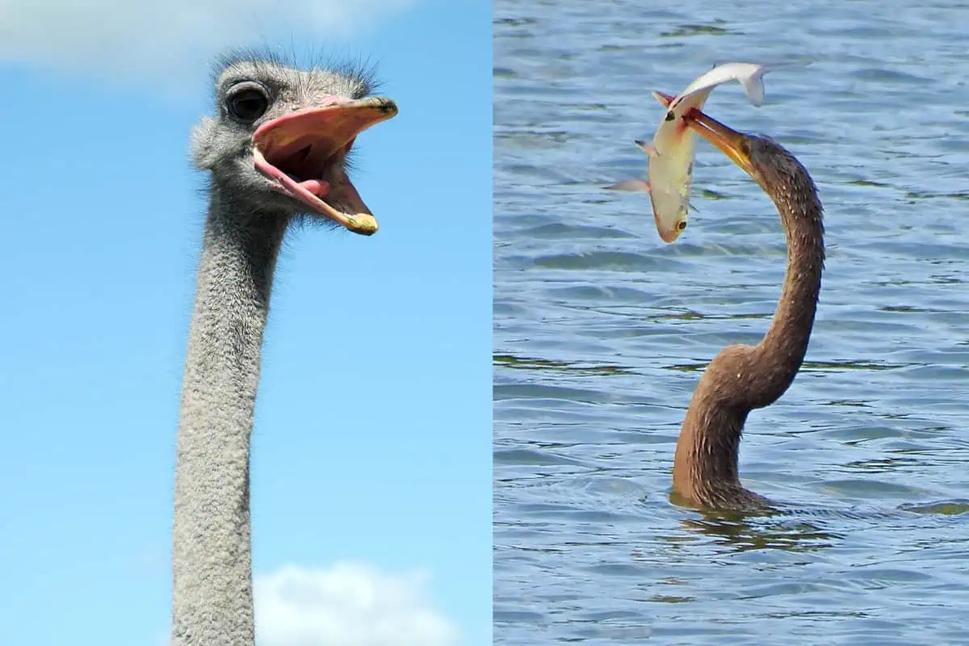
But what do these names mean? And why would a sword have a handle almost as long as its blade? Let’s unpack the story behind these fascinating weapons and see why they’re quite the blend of sword and polearm.
The Basics: Names That Dance Around the Sword with a Long Handle
The first term you might hear is zhanmajian, which translates to “chop horse sword.” Literally breaking down enemies and horses alike, this name originates from large two-handed swords found in the Han Dynasty. While the jian is generally a double-edged straight sword, these had unusually long hilts to allow more power and leverage.
Now, for a single-edged variant, the name shifts slightly to zhanmadao, or “chop horse knife/blade/sword.” This one edges out—pun intended—as the more common form historically. The word dao (刀) simply means blade or knife and refers broadly to single-edged weapons across all sizes, from small knives to large polearms.
When the weapon looks like a big, rugged sword, the terms pudao (樸刀) and dadao (大刀) come into play. These mean “simple/plain blade” and “big blade,” respectively. They often describe weapons similar to the one in question—single-edged and long handled—used widely in China, especially in the Qing and Ming dynasties.
Enter the Mythical: Erlang Dao and Its Divine Associations
Things get even more colorful with the Erlang dao (二郎刀). This weapon is noted in the famous Chinese encyclopedia Sancai Tuhui, showing a double-edged blade with a haft as long as the blade itself. It’s named after the god Erlang Shen, a well-known figure wielding a similar weapon.
There’s even a variant called the sanjian liangren dao (三尖兩刃刀), or “three-point double-edged dao,” which adds a triple-pointed twist to the blade. So, depending on your angle, the weapon might fall under the name zhanmajian or Erlang dao. Both names show the weapon’s rich historical and cultural lineage.
Why Did Warriors Use These Extra-Long Hilts?
From a purely practical perspective, a long hilt means extended reach. The wielder can grip the handle further back, increasing leverage and power behind every swing or thrust. In close fighting—especially when facing opponents with long polearms—the extra handle length allows for manipulation closer to the opponent, potentially controlling their weapon or disturbing balance.
Sounds great, but nothing’s perfect. The extended handle restricts quick wrist and arm motions. Picture trying to swing a broomstick with a tennis ball taped at the end—it’s awkward, right? The long handle also presents an easy target for enemies to grab, which you definitely don’t want in a heated duel. Plus, wielding such a weapon means both hands are busy, so forget about carrying a shield.
There’s also the weight factor. These swords don’t feel light like a staff; they’re heavier and handle quite differently compared to simple wooden poles like the jo staff. This weight affects stamina and speed. Lastly, because the weapon is long, it’s not convenient to wear on your belt like a sidearm—think of trying to walk through a door burdened with a spear hanging from your waist.
Blending Sword and Polearm Traits: A Double-Edged Sword (Literally)
Weapons with extra-long hilts combine traits of swords and polearms. They offer reach and leverage like polearms but carry the cutting versatility of swords. Unfortunately, they also blend the weaknesses of both. They are less maneuverable than swords and shorter than pure polearms, leading to their relative rarity compared to each specialized weapon type.
This hybrid nature explains why you don’t see these all the time. In battlefield terms, soldiers preferred either a nimble sword or a long spear, but not something stuck awkwardly in between.
Across the Sea: Japanese Equivalent – The Nagamaki
While we’ve been diving deep into Chinese weaponry, across the sea lies the Japanese nagamaki. It’s a long-handled sword sharing similarities with the weapons we’ve discussed. The nagamaki has a single-edged blade and a long hilt, but it arose independently with its own fighting styles and traditions.
So, if you spot a sword with a long handle, it might be an nagamaki if you’re in Japan. In China, many similar weapons fall under the cluster of names: zhanmajian, Erlang dao, pudao, or dadao.
Additional Swords and Polearms in Context
You might have seen related weapons in stories or films which are not quite the same but add flavor to the martial palette. For instance:
- Hudiedao (蝴蝶刀), the “butterfly dao,” a paired single-edged blade famously wielded by heroes.
- Niuweidao (牛尾刀), or “oxtail dao,” recognized for its unique shape.
- Ji (戟), a halberd-type polearm combining spear and axe traits.
- Lujiaodao (鹿角刀), “deer horn knives,” which are usually wielded as a pair.
All these showcase the rich diversity of Chinese bladed weapons—each suited for different fighting styles and tactical purposes.
Summary Table of Names
| Name | Chinese Characters | Translation | Notes |
|---|---|---|---|
| Zhanmajian | 斬馬劍 | Chop Horse Sword | Used for large two-handed Han dynasty jian swords; no official Qing name |
| Zhanmadao | 斬馬刀 | Chop Horse Knife/Sword | More common single-edged variant |
| Pudao | 樸刀 | Simple/Plain Blade | Common single-edged form similar to the movie weapon |
| Dadao | 大刀 | Big Blade | Used also for large two-handed sword-sized dao |
| Erlang Dao | 二郎刀 | Erlang Blade | Double-edged with long haft, named for god Erlang Shen |
| Sanjian Liangren Dao | 三尖兩刃刀 | Three-point Double-edged Blade | Variant of Erlang dao with triple-pointed blade |
Practical Tips if You’re Handling or Buying Such a Weapon
- Understand the weight: These weapons are hefty and handle differently than shorter swords or staffs.
- Grip positioning matters: The long handle allows switching hand spots for reach or leverage.
- Avoid shield dependency: Since both hands are needed, practice without a shield.
- Store vertically or get a special belt: Normal belt carry won’t work well due to length.
And if you’re curious—why would anyone want to carry such a cumbersome sword? Well, in the right hands, the extended handle shifts fighting dynamics. It’s part spear, part sword. An expression of martial creativity forged over centuries.
Final Thoughts: Why This Weapon Still Captivates Us
In short, the sword with the extra-long hilt bridges swordsmanship and polearm techniques. Whether called the zhanmajian, Erlang dao, or pudao, it holds a unique place in history.
Sometimes, understanding these details adds new appreciation for ancient weapons. They weren’t just tools—they expressed strategy, culture, and myth. The next time you spot a blade wielded with two hands on a long handle, remember the legacy behind its name. And who knows? Maybe you’ll find a new favorite weapon in the story of the chop horse sword.
So, are you ready to wield one of these iconic fabrics of history? Just beware: it’s not like picking up your average sword. It’s a full-body experience, a dance of reach and power, with a flair that only an extra-long hilt can offer.
